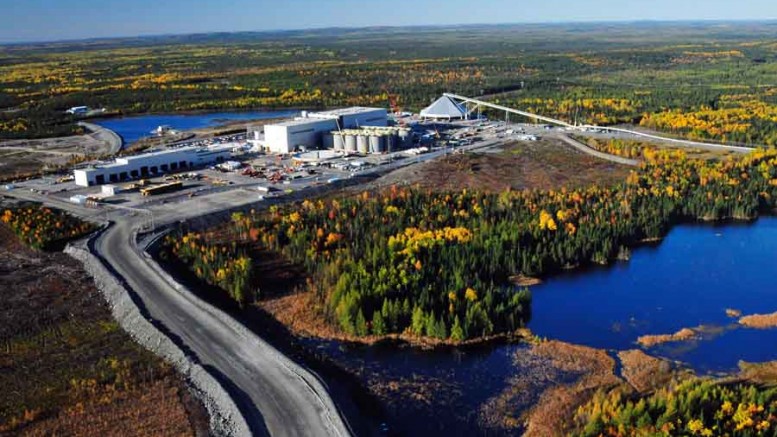Osisko Mining (OSK-T) had a rough start as it kicked off its first full year at the Malartic gold operation near Val-d’Or, Que., with operational setbacks impacting first-quarter performance, coupled with the mill’s temporary shutdown in May.
As the company struggled to ramp up Malartic, a fire broke out at the plant on May 9, causing Osisko to take the mill offline for two to three weeks. Its share price plunged days after the company said delays would affect second and third-quarter production and in turn would lower its output target for the year.
The bleak near-term outlook sent analysts trimming their price targets, but most expect Osisko should recover from the unfortunate twist of events.
“We continue to believe in a steady re-rating of the shares as Malartic ramps up, albeit at a reduced pace, on both grade and throughput in 2012,” Canaccord Genuity analyst Steven Butler writes in a note to clients. He lowered his target price from $16 to $12.75, but kept a “speculative buy” on the stock.
Taking into account the delayed ramp-up and production revision, Cormark Securities cut its price target to $18 from $22, while Dundee Capital Markets’ target -declined to $13 from $16. Both firms maintain a “buy” on Osisko shares, noting their positive sentiment -towards the project remains -unchanged.
But the first three months of the year were “clearly a disappointing quarter for the company, with numerous challenges being experienced at Canadian Malartic,” TD Securities’ analyst Daniel Earle says, reducing his target to $11 from $14 and maintaining a hold rating on the stock.
For the quarter, the Montreal-based junior earned $29.4 million, or 8¢ per share, which is below the consensus of 12¢ per share.
Malartic, the company’s sole mine, produced an improved 91,178 oz., but fell short of the company’s 109,000 oz. target and the likely street consensus. Cash costs were $860 per oz. in a 6% improvement over the -preceding period.
The company says it would have likely hit its first-quarter output -target if installation and start-up of the secondary cone crusher had gone smoothly.
But the crusher failed to perform as expected and was routinely adjusted, causing a week of downtime in March followed by five days of partial production, impacting tonnage.
For the period, Osisko processed 37,532 tonnes per day at an improved grade of 1.05 grams. The gold producer aims to complete the secondary crushing facility in July instead of June. This should bring the mill towards its design capacity of 55,000 tonnes a day by September, which is three months later than planned.
Before it shut down, the mill churned through 42,000 to 46,000 tonnes per day.
A $13 million cost overrun is expected to bring the mill to design capacity. To allow for more production flexibility, Osisko plans to invest another $12 million for a second pebble crusher, which should be in service by September.
During the first quarter, the company had problems accessing the higher-grade ore, and mining activities were affected by low availability of loading units and by rainy weather and wind conditions.
However, most analysts believe Osisko should be able to jump these hurdles.
Osisko is assessing the damages of the fire that broke out on May 9 around midnight and raged for nearly five hours before being extinguished. The fire is believed to have been started by welding activities near the mill’s number-four cyclone.
Preliminary inspections indicate the fire damaged the number-four cyclone, an overhead crane in the cyclone bay and the structure of the roof above the bay. The wall of the bay suffered limited damage, but the semi-autogenous grinding ball mills and other areas of the mill were untouched.
Fortunately, none of the 50 workers at the plant were injured during the incident.
On May 10 the company said mining operations were continuing outside of the mill area and that all employees were back to work. It added that no industrial chemicals were released during the fire.
Osisko plans to update investors shortly on its 2012 production guidance for Malartic. For this year, Osisko had previously anticipated output of 610,000 and 670,000 oz. gold, and annual production for the first five full years of operation to average 625,000 oz. gold.
The company touched a new 52-week low of $6.47 on May 14, with shares sliding more than 24% since reporting the fire, and first-quarter struggles.


Be the first to comment on "Osisko faces delays, output revision at Malartic"